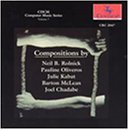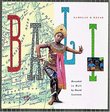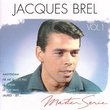| All Artists: Cdcm Computer Music Series Title: CDCM Computer Music Series Vol. 7 - iEAR Studios, Rensselaer Polytechnic Institute, NY Members Wishing: 3 Total Copies: 0 Label: Centaur Release Date: 9/1/1993 Genres: Special Interest, Pop, Classical Styles: Experimental Music, Vocal Pop, By Decade, 1980s, Historical Periods, Modern, 20th, & 21st Century Number of Discs: 1 SwapaCD Credits: 1 UPC: 750582970238 |
Search - Cdcm Computer Music Series :: CDCM Computer Music Series Vol. 7 - iEAR Studios, Rensselaer Polytechnic Institute, NY
 | Cdcm Computer Music Series CDCM Computer Music Series Vol. 7 - iEAR Studios, Rensselaer Polytechnic Institute, NY Genres: Special Interest, Pop, Classical
|
Larger Image |
CD DetailsSimilarly Requested CDs |
CD ReviewsHas more soul than some Steve Benner | Lancaster, UK | 10/02/2001 (4 out of 5 stars) "This disc is CDCM's second visit to the studios at Rensselaer Polytechnic Institute, Troy, NY. My main criticisms of the earlier release were concerned with the rather cold nature of the compositions featured, together with the disc's concentration on music by male composers. I am pleased to say that both of those criticisms have been addressed somewhat with this release.The disc begins with Neil B. Rolnick's "Vocal Chords" (1988). This is an 8-minute wordless blues-style improvisation for singer and live electronics. It comes across as a fun exercise for performer - Kathleen Myers in this recording - as well as for concert audience and it works rather better on CD than does many another live improv' I have heard. Rolnick's other work on the disc is an exploration of blues-related material of a somewhat different kind. By taking samples from a recording of the legendary blues master, Robert Johnson, and reconstructing/deconstructing these materials, "A Robert Johnson Sampler" (1987) invites a re-examination of countess blues clichés. The result is not only amusing and thought provoking; it is surprisingly listenable, alternating between the whimsical and the introspective throughout its 13-odd minutes.Pauline Oliveros' "Lion's Tale" (1989) is essentially a work for computer-controlled gamelan, with samples from the Berkeley Gamelan triggered by a computer program at rates up to 1800 per minute. It sounds much like a gamelan improvisation but involves speeds that could simply not be played by human performers. Like much music from Oliveros, it is necessary to listen quite deeply into this piece to get the most from it. At a surface level, the piece comes across as a pleasant but not terribly interesting work. Deeper listening, however, allows the rapidly triggered samples (which imbue the piece with an electronic-like texture at times) to work a somewhat hypnotic and transfiguring effect over its 15-minute duration. Nevertheless, I suspect that the piece probably works better in live performance than on a recording.The same feeling lingers throughout "Child and the Moon-Tree" - a 17-minute reduction of a longer, fully staged work, by composer and vocalist, Julie Kabat. The work is a poly-stylistic assemblage of sung and spoken texts, with an accompaniment of computer processed sound samples ranging from Noh Theatre music, the chanting of a Mongolian shepherd, whale songs and musical saws. Unfortunately, while Ms Kabat's voice is a treat to listen to, we are given no real guide to the story being recounted and it is easy for a listener to become lost quite quickly. It also leaves me with the feeling that too much has been cut from the work in order to reduce it to a size suitable for inclusion on this disc. Perhaps CDCM should have taken the plunge and featured the entire work?Barton McLean's "Visions of a Summer Night" (1989) is another work presented here in extract form only. Just two of its movements are featured: 'A Little Night Music (Eine Kleine...) ' and 'Demons of the Night'. Both present something of an electronic, yet almost orchestral-sounding, picture of midsummer evenings in North-eastern US. The first uses conspicuous and persistent cricket samples to establish its relevance, while the latter presents rawer synthetic instrumental voices to concoct an altogether more abstract musical portrait of imaginary (one hopes!) terrors of the night. Both extracts incorporate a rather more raucous and raw-edged character to their sound-world than would accord with my own experiences of North-eastern US nights, being decidedly more nightmarish and foreboding than I would have expected. Or maybe Petersburg, NY is a scarier place than either Massachusetts or Connecticut? The disc ends with Joel Chadabe's "Modalities" (1989), an interactively computer-composed piece, of little real interest to anyone not of an academic analytical bent.Overall then, while not terribly likely to appeal to a very wide audience, this disc has much to commend it for those interested in late 20th century American art music, of which it is a fine example. Most potential purchasers would be wise to sample before they buy, however."
|

 Track Listings (7) - Disc #1
Track Listings (7) - Disc #1
